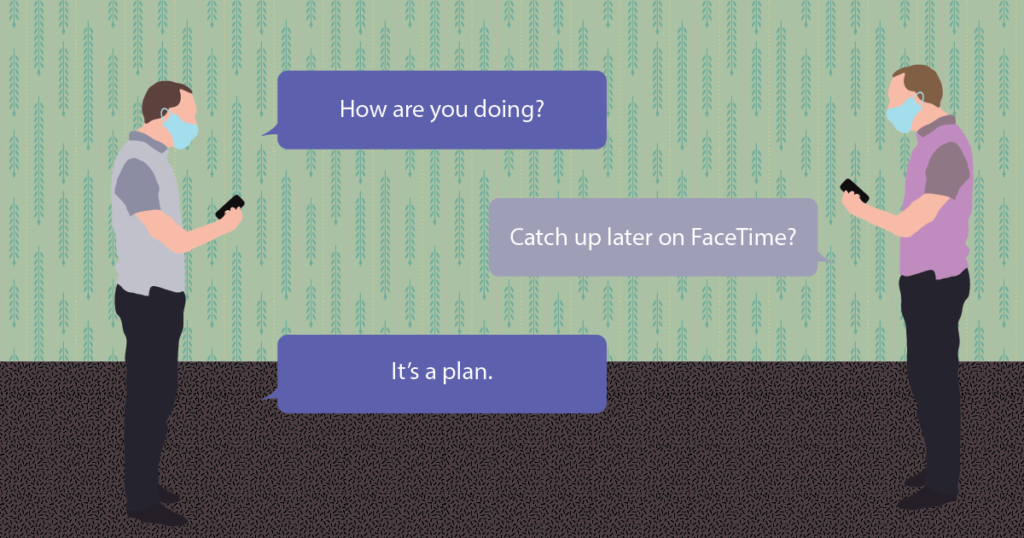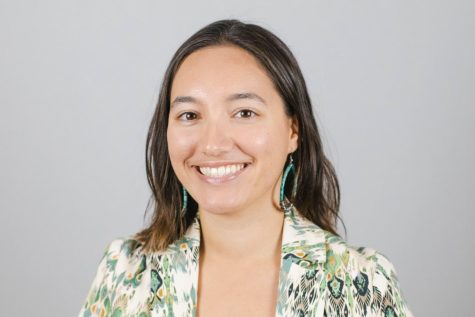The term social distancing is heard on a near-daily basis in the news, gatherings and even in friendly conversations. Seemingly overnight, we went from hanging out with friends, going to the movies and standing in crowds without a second thought, to seeing signs everywhere reminding us to “social distance.” It is a term that has seemed to take over our lives with the rise of the COVID-19 pandemic, and it doesn’t seem to be going away anytime soon.
But what does social distancing actually mean?
According to the medical definition on Merriam-Webster, social distancing is “the practice of maintaining a greater than usual physical distance (such as six feet or more) from other people or of avoiding direct contact with people or objects in public places during the outbreak of a contagious disease in order to minimize exposure and reduce the transmission of infection.”
That’s great. Reducing the spread of COVID-19 and flattening the curve of infected people is super important in saving lives. However, this definition doesn’t really say anything about being socially distant from others; it is focusing on the physical distance between people and avoiding direct physical contact with them. When we say ‘social distancing’ what we really mean is ‘physical distancing.’
Some people might say that it doesn’t really matter what we call it as long as we are staying six feet apart. We all know what social distancing really means, so why would we need to change our terminology to be more accurate?
The problem lies within what the words ‘social distancing’ implies. Yes, we should be keeping a physical space between ourselves and others, but social connectedness is even more important now that we can’t meet face-to-face. We should not be distancing ourselves socially.
“We know that when people isolate, they are more likely to suffer from mental illness issues or periods of depression and anxiety. They are more likely to use alcohol or drugs more frequently and we know that there are higher levels of domestic violence when people are isolated from other support systems,” Jean Kupper, a psychologist and counselor at NMU, said.
Keeping in touch with our own support systems and family can seem difficult when we don’t see them in person. I personally found it difficult during quarantine to remember to call family members and friends.
It can be easy to slip into periods of complete isolation when technology provides such great distractions and seems to turn a 10-minute video on YouTube into a four-hour dive into the depths of the Internet discovering whether Mothman really exists.
But access to this technology also provides more ways for us to connect with others. Besides the normal phone call or video chat, family and friends can now watch movies together, play games online and attend virtual concerts, all from separate households.
Continuing to call and check in with those we care about is not only important for our own mental health but benefits them as well.
“One of the things that I think is important to realize is that we don’t live independently from the rest of the world. We live in communities and we need each other to live our lives. We need our friends, our family, the health professionals in town, our social groups, our activities,” Kupper said.
This transition from ‘social distancing’ to ‘physical distancing’ is not a new concept. On March 20, the World Health Organization held a briefing where they talked about purposefully shifting away from the term ‘social distancing’ and actively encouraging others to do the same to promote mental health and connectedness.
Dr. Adam Rosh, an Emergency Medicine Physician, in an interview with Fox Detroit also mentioned how “the main thing that we can all do, is what is called social distancing. I like to use the phrase ‘physical distancing’ … Now you’re going to be spending much more time in your house, spending time away from people … to limit transmission of the COVID-19 virus. [Social distancing] takes away the idea we can still talk to loved ones.”
While changing the way we talk about safety during the pandemic may seem inconsequential, the fact that many people are pushing for the use of the phrase ‘physical distancing’ highlights the impact of the way we use words. While we may know ‘social distancing’ really means taking physical precautions while still maintaining a social connection with others, it still carries with it the idea that we should be apart from each other and not engage in social interaction.
You can’t catch COVID-19 from Zoom calls, but you can catch it from drinking at a bar, especially if no one is wearing a mask. Both are forms of social interaction, but one is physically distant and much safer than the other.
During this pandemic, it is important that we remember to keep each other safe by staying six feet away from those not in our COVID-19 bubble, wearing a mask when around others and washing our hands. But it is also important we support each other and check-in with friends and family during this difficult time. One way to remember to do this is by consciously changing the way we talk about the physical boundaries we need to establish with each other, and encouraging social interaction.
Editor’s Note: The North Wind is committed to offering a free and open public forum of ideas, publishing a wide range of viewpoints to accurately represent the NMU student body. This is a staff column, written by an employee of the North Wind. As such, it expresses the personal opinions of the individual writer, and does not necessarily reflect the position of the North Wind Editorial Board.























